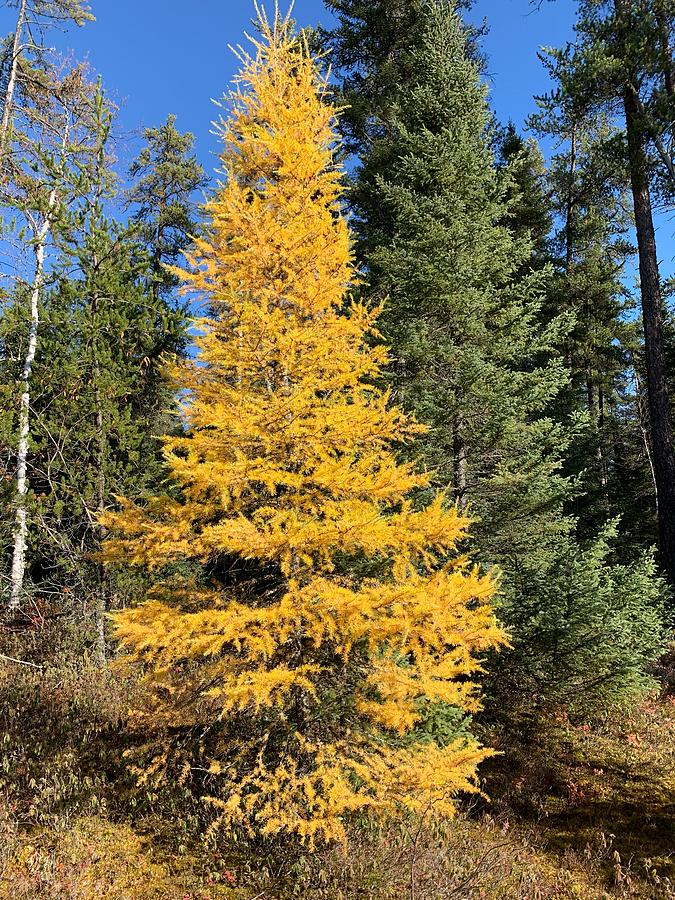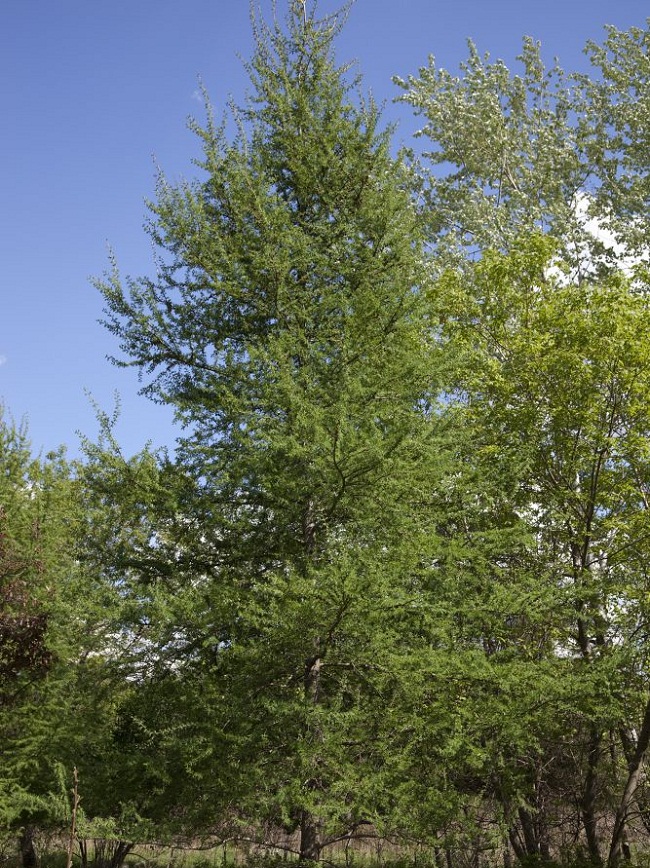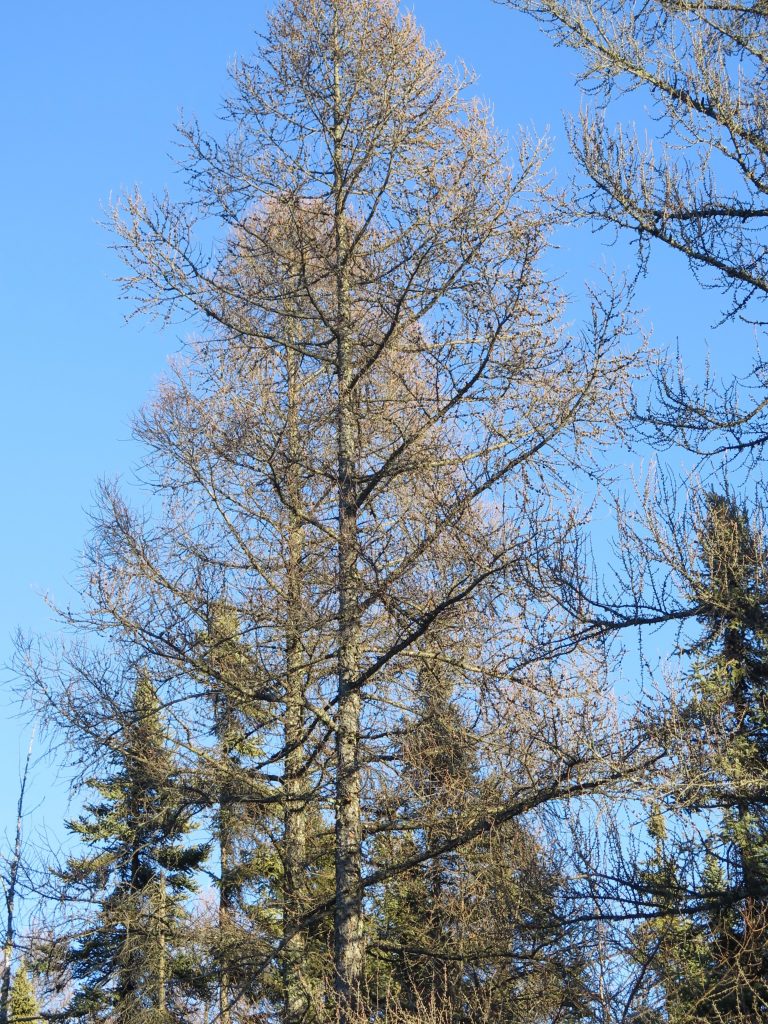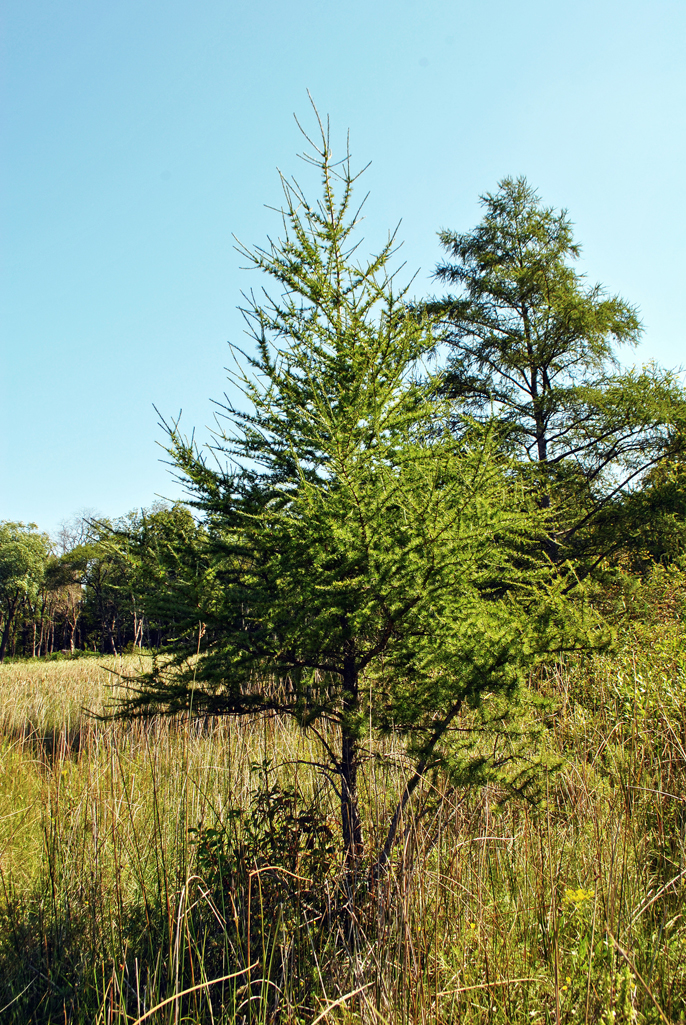.JPG;w=1200;h=800;mode=crop)
Tamarack trees' bold statements are part of autumn's encore Orillia News
One of the most beautiful trees in the far northern forests of North America is the colorful deciduous conifer ( Larix laricina ), commonly called the tamarack or American larch. The tamarack is used in ornamental horticulture to add four-season interest to a landscape in colder regions.
:max_bytes(150000):strip_icc()/tamarack-tree-growing-guide-5196354-07-19a212f4a3554b48aaec4b60d1701a93.jpg)
How to Grow and Care for a Tamarack Tree
Tamarack will grow to be about 50 feet tall at maturity, with a spread of 20 feet. It has a low canopy with a typical clearance of 1 foot from the ground, and should not be planted underneath power lines. It grows at a slow rate, and under ideal conditions can be expected to live for 60 years or more. This tree does best in full sun to partial.

What is a Tamarack Tree? Home Stratosphere
West Haven Nursery mainly sells caliper deciduous trees in the 50 mm (~2.5 M) to 120 mm (~6 M) size, and conifers in the 1.8 to 4 M heights. On our Tree Farm we grow a wide range of tree types with currently about 30 varieties. Click the button below to view a list of what we grow.

What is a Tamarack Tree? (2022)
Tamarack is a small to medium-sized native conifer tree featuring needles that turn an attractive gold before dropping in the fall. This cold-tolerant tree grows well in very wet conditions, as long as it is exposed to full sun. Staff Favorite! AVAILABLE STOCK view larger photo Tamarack Larch - 1 Year Old

Pin on Tamarack
Habitat Found mixed with Black Spruce and Eastern White Cedar. Preferred Soil Type Cold, wet, poorly drained sites. Distribution Across Canada What it looks like At Maturity Medium sized tree, triangular outline, narrow straight trunk. Bark Greyish, becomes scaly with age. Leaf

Tamarack Tree stock photo. Image of coniferous, unique 27859728
well-drained soils, the tree can reach as high as 25 metres. Within Alberta, tamarack grows throughout the central and northern areas of the province, rarely in pure stands. On a national level, tamarack is grouped together with 'other coniferous' species, accounting for approximately 4% of Canada's total forest inventory. Tamarack

Growing Tamarack Trees Information And Care For Tamarack Trees
: The tamarack is a medium-sized tree that grows to a height of 20 m. It has a narrow crown, thin scaly bark and long, slender, pliable branches. The bark of young trees is gray and smooth, becoming reddish brown and scaly with age.
Trees of the Boardwalk Hinton, AB Official Website
Tamarack is a beautiful, long-lived tree that is both deciduous (leaf-dropping) and coniferous (cone-bearing). It is most commonly found in poorly drained muskeg areas in the boreal forest and foothills. In these areas, it can tolerate greater amounts of soil saturation than any other native coniferous tree.

Tamarack in Fall Photograph by Judy Dimentberg
Trees. Alberta has a unique growing season and an incredible amount of diversity in its tree species. At Bow Point Nursery, we are one of the only nurseries that practices bare-rooting, a traditional practice used by homesteaders to ensure a species will thrive in Alberta's climate.. Tamarack CA$25.00 Add To Cart. Siberian Larch CA$25.00.

Tamarack Tree Identification
Description: A tall spire-like deciduous conifer with soft fine needles needles starting bright green in spring and turning brilliant gold in fall; prefers moist locations and sandy soils. Ornamental Features Tamarack is primarily valued in the landscape for its distinctively pyramidal habit of growth.

Tamarack AWES Agroforestry and Woodlot Extension Society of Alberta
What is tamarack? Are tamarack and larch the same tree? Tamaracks are a type of larch tree, but not the same type that we find in the subalpine at elevations between 1,500 and 2,200 metres. They're similar, but have some distinct differences. In fact, there are no tamarack trees in the South Canadian Rockies…

Tamarack Tree Photos, Diagrams & Topos SummitPost
Overview In Alberta, there are 2 types of timber permits that authorize tree cutting for personal use: Personal Use Forest Products Permits (PUFPP) Local Timber Permits (LTP) Both permits grant the holder the legal authority to harvest Crown timber in designated areas.

How to Grow Tamarack grow tamarack trees and their care
Tamarack's pitch, in particular, when mixed with grease, may be used in cosmetics and hair treatments, while the tree's roots are great to stitch bark onto boats.. In addition to its trees, Alberta has a wide variety of fish species that inhabit its waters. These include the Bull trout, Arctic grayling, Goldeye, and Cutthroat trout.
:max_bytes(150000):strip_icc()/tamarack-tree-growing-guide-5196354-04-8b1e157e06c940a89bd05bd157413db4.jpg)
How to Grow and Care for a Tamarack Tree
Habitat Exists on cold, wet, poorly drained sites. Other notes Found mixed with black spruce and eastern white-cedar. The Tamarack is the official arboreal emblem of the Northwest Territories. Hardiness zone (s) 0a, 0b, 1a, 1b, 2a, 2b, 3a, 3b, 4a, 4b, 5a, 5b, 6a, 6b, 7a, 7b, 8a, 8b, 9a, 9b

Tamarack Tree Identification
shrubs. Coniferous trees are commonly referred to as evergreens, softwoods or needle-leaved trees, and with the exception of tamarack, all of the trees in this group retain their leaves for two or more years. The deciduous trees and shrubs are most often referred to as broadleaf trees or shrubs. Deciduous trees are known as hardwoods.

112/150 Autumn is here and the Tamarack Tree loses its needles BIObus
Larix laricina is a small to medium-size boreal deciduous conifer tree reaching 15-23 m (49-75 ft) tall, with a trunk up to 60 cm (24 in) diameter. [5] The bark of mature trees are reddish, the young trees are gray with smooth bark. [6] The leaves are needle-like, 2.5 cm (1 in) short, light blue-green, turning bright yellow before they fall.